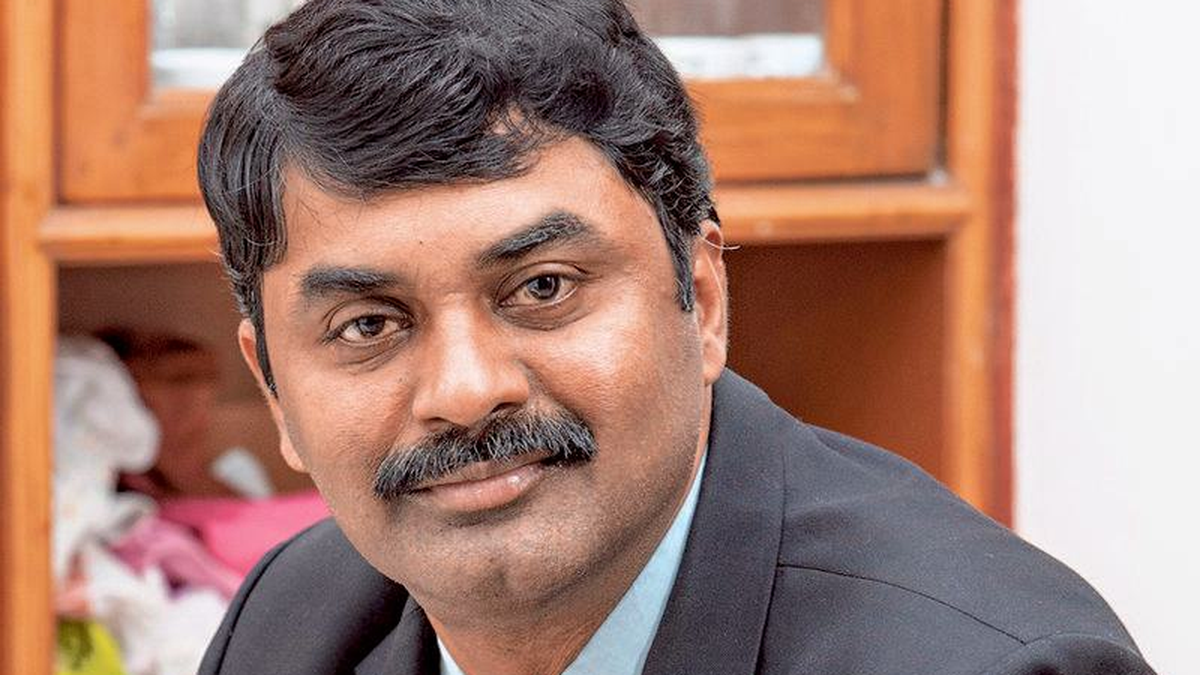
The 90-inch telescope, weighing 115 tonnes, was established in 1986 atop the Jawadhu Hills at Kavalur. This telescope was the largest in Asia then.
| Photo Credit: R. Sai Venkatesh

The Vainu Bappu Observatory’s latitudinal advantage makes it the only station of the the Indian Institute of Astrophysics where stellar observations on the southern skies can be carried out.
| Photo Credit:
R. Sai Venkatesh
On the Tiruvannamalai-Tirupattur border and 800 metres atop the serene Jawadhu Hills at Kavalur stands a haven for stellar observations. Set up in 1968, the Vainu Bappu Observatory (VBO), named after the man considered the father of modern Indian astronomy, stands between vast swathes of forestland and habitations. Technicians and engineers work in shifts at cylindrical dome-shaped structures housing telescopes. All the path-breaking work begins after sunset, with observers scanning the skies through telescopes of different sizes. The telescopes are exposed to the night sky by opening the dome on one side. They are then aligned, through commands from the control room, and the study starts. “The observatory gets projects or proposals, based on which a study is done. The duration of observation depends on the proposal,” says S. Venkatesh, Research Assistant (Observations), VBO. With light pollution posing a threat, the staff have learnt to navigate their way around darkness, he adds.
Long-term plan
The first official observatory was set up in the Madras Presidency in 1792; for over a century, it was the only facility for systematic observations. Later, solar observatories came up in Dehradun and Kodaikanal (in 1899), the latter taking over a major chunk of the Madras observatory’s work. A committee was formed in 1945 to modernise the Kodaikanal observatory and establish smaller ones nationwide. The long-term plan was to have an observatory to study stars with large telescopes. It paved the way for the VBO. Vainu Bappu returned to India in 1952 after researching at foreign observatories. He was roped in to find a location for stellar observations on the southern skies. He had earlier played a vital role in reforming an observatory at Nainital (later renamed as ARIES). “Bappu and his team surveyed the entire South India with a telescope. A site survey team set out on April 10, 1962, to examine the conditions in the Yelagiri and Jawadhu Hills. At last, the sandalwood forest in the Jawadhu Hills was found the most suitable site,” Dr. M.S.S. Murthy writes in the book, Vainu Bappu-The man who knew the stars. The observatory has come a long way. “This is one of the field stations functioning under the Indian Institute of Astrophysics (IIA). Several telescopes were installed over the years. In 1968, the 15-inch telescope was installed. Then came the 40-inch in 1972 [readily purchased]; the 30-inch in 1974 [indigenously manufactured]; the 90-inch (2.34 m, also indigenously manufactured) in 1986; and the 51-inch (1.3m) in 2014,” says Ramachandran, chief engineer, VBO. The 90-inch (aperture of the mirror) telescope, weighing 115 tonnes, was the largest in Asia then. Former Prime Minister Rajiv Gandhi named the telescope and the observatory after Vainu Bappu in 1986 during his visit to Kavalur, a report in The Hindu Archives reveals.
The VBO’s latitudinal advantage makes it the only station of the IIA where stellar observations on the southern skies can be carried out. Professor Gajendra Pandey, Head, Chair of Stars and Galaxies, IIA, recalls, “I started my journey from this place. This place is a training/testing hub. Students are allowed to get trained in the equipment and telescopes. This inspires them to pursue the field, paving the way for them to work on better telescopes — like the ones at Hanle or Devasthal. Nobody would, however, spare a 2.34-m telescope for studies.” However, the sky conditions have deteriorated over the years, unlike at Hanle where there is no vegetation. Thick tree covers, which increase humidity, too pose a challenge to the researchers. Moreover, with villages coming up around the observatory, light pollution has increased, says Professor Maheswar Gopinathan, Chief Scientist, VBO.
But he also spotlights the invaluable access to resources at the facility. “In 1988, when I came here for the first time, I didn’t even have access to a small telescope. My jaw dropped [on seeing the 90-inch telescope]. I would not have even done my Ph. D, had I not visited this place. Now, as we have been trained, we are enlarging our scope. The significance of this place is that it has produced so many good astronomers. Take the international thirty-metre telescope project [of which the IIA is a part]. We are in the project only because of the training we have received at this place,” he says. A major subject that the VBO could pursue is spectroscopy, Mr. Pandey says. Seconding this, Mr. Gopinathan adds, “We have to redefine the use of this place — from photometry to spectroscopy. There is also a scope to strategise the place better, taking it hand in hand with observations and training.”
A long-standing legacy
“This is a place that produces astronomers who know the ins-and-outs of astronomy and provides a know-how expertise that is unique,” says IIA Director Annapurni Subramaniam. “When I came here, I was not the only woman in science. This place has always accommodated women astronomers,” Professor Annapurni adds. Another stand-out feature of the VBO is the time and space the facility offers for path-breaking studies. “We have a lot of time for statistical and time-specific follow-up studies, with the existing activities and equipment.” The observatory is open to the public on Saturdays. It is closed from June to July every year for maintenance.
Published – January 30, 2025 10:41 pm IST



